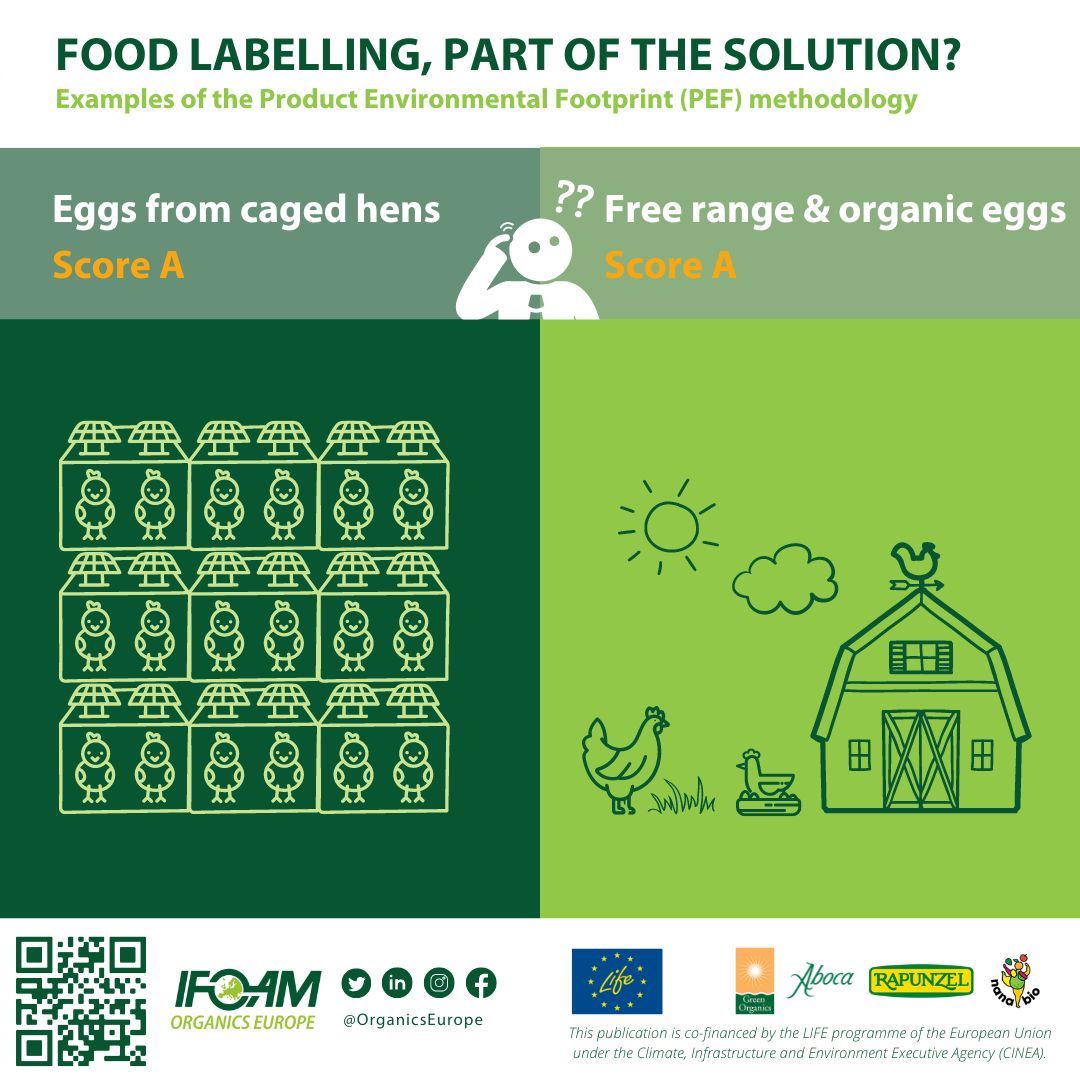The European Commission is working on an upcoming legislative proposal to help justify (‘substantiate’) green claims and prevent greenwashing.
It is expected to reveal the proposal for a “Regulation on Substantiating Green Claims based on the Product Environmental Footprint (PEF)” under the lead of the Commission’s Directorate-General for Environment (DG ENV) on 30 November. A second initiative, by the Directorate-General for Health and Food Safety (DG SANTE), is the sustainable food systems law. Expected by the end of 2023, this framework should include principles underpinning a sustainability label.
However, this proposal from the Green Claims risks misleading and worsening ongoing greenwashing in the food and fashion industries. Together with NGOs, the organic movement has taken a strong stance against this in a recent joint letter on apparel and footwear products and another (earlier) letter on agrifood products.
Initiative on substantiating green claims
A plethora of new policy initiatives on the EU horizon seeks to reduce greenwashing in various economic sectors. Among others, the initiative on substantiating green claims is expected by the end of November 2022, which would tie into the legislative proposal on empowering consumers in the green transition. This initiative will require companies to substantiate any environmental claim.
This initiative would favour using the Product Environmental Footprint (PEF) methodology, based on a life cycle analysis (LCA), to assess a product’s environmental impact. While it is still relevant for manufactured industrial products, the PEF methodology is not adequate to assess the environmental performance of agri-food products, as this joint letter by a coalition of environmental NGOs explains, and also for textile products on which we co-signed an open letter to the European Commission criticising the standalone application of the methodology in the textile and apparel industry.
Shortcomings of the PEF for agrifood & alternatives
The PEF was not meant to reflect the reality of complex agri-food systems holistically. While the product-focused PEF serves well to compare manufactured industrial goods, the approach significantly lags when evaluating the environmental performance of complex agricultural systems, including natural fibre production, holistically.
When applied to food, PEF gives misleading results, since the more extensive the agricultural practice is, the worse it scores, evaluating products as an indicator of yields. For instance, eggs from hens in cages score better than free-range eggs, which in turn score better than organic eggs. The same logic applies to agriculturally derived natural products, such as cotton, wool, hemp, jute, kenaf, and flax.
The institute of organic agriculture (ITAB) and other actors in France have joined forces to put together a methodology and label that would reflect the true environmental impact of food products: the Planet-Score.
The Planet-Score is based on the Life Cycle Assessment (LCA), with two fundamental modifications:
- An updated method when it comes to certain indicators,
- A series of additional indicators to reflect those externalities that are not sufficiently taken into account in the LCA methodology (pesticides, climate, biodiversity and animal welfare) through a bonus/malus system.
The Planet-Score is already receiving support from consumers. A study carried out on a representative sample of the French population composed of 1,000 consumers showed that 48% of consumers preferred an approach such as the Planet-Score to labels that only show a final score. It also received wide support from companies (organic and beyond) as it is being tested by more than 166 including supermarkets like Carrefour, Auchan and some brands of Danone, and others.
Read the position paper and learn more about IFOAM Organics Europe’s work on food policy on their website.



